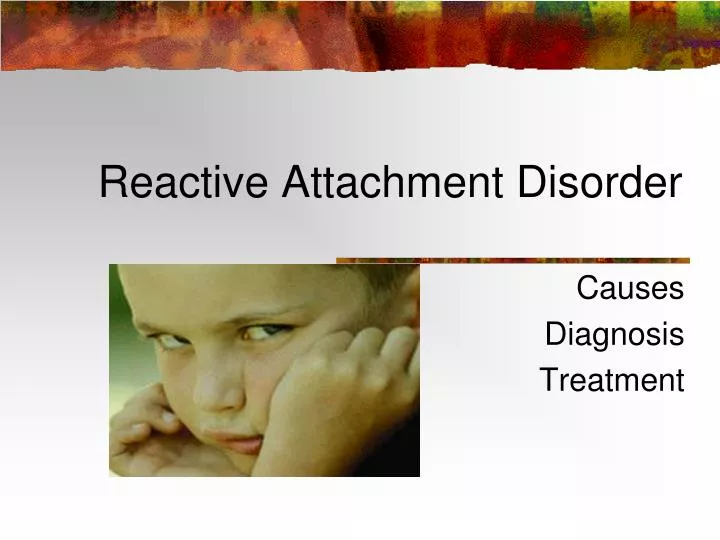

2 If the child turns towards the caregiver for protection and comfort when distressed, this indicates a secure attachment. This secure form of attachment is identified by how the child reacts to their caregiver when in distress. If a child’s basic needs are well met, a secure, loving attachment between the child and the caregiver will develop. According to Diane Benoit, MD, 2 secure attachment is a relational bond that forms between infant and primary caregiver when their primary caregivers consistently meet an infant’s needs for love, warmth, safety, food, and attention. G.To clearly understand RAD, we first have to talk about the concept of attachment. The disturbance is evident before age 5 years The criteria are not met for autism spectrum disorderį. the disturbances in Criterion A began following the lack of adequate care in Criterion C)Į. The care Criterion in C is presumed to be responsible for the disturbed behavior in Criterion A (e.g.

institutions with high child-to-caregiver ratios)ĭ.

Social neglect or deprivation in the form of persistent lack of having basic emotional needs for comfort, stimulation, and affection met by care-giving adults.The child has experienced a pattern of extremes of insufficient care as evidenced by at least one of the following: Episodes of unexplained irritability, sadness, or fearfulness that are evident even during non- threatening interactions with adult caregiversĬ.Minimal social and emotional responsiveness to others.A persistent social and emotional disturbance characterized by at least two of the following: The child rarely of minimally responds to comfort when distressed.ī.The child rarely or minimally seeks comfort when distressed.A consistent pattern of inhibited, emotionally withdrawn behavior toward adult caregivers, manifested by both of the following: DSM-5 Criteria for Reactive Attachment DisorderĪ.An underdeveloped conscience with a failure to show guilt, regret, or remorse.Difficulty giving/receiving genuine care and affection.Anger problems (which may be expressed directly, in tantrums or acting out, or through manipulative, passive-aggressive behavior).

Manipulative/aggressive /abusive behavior.Disobedient/ defiant/argumentative behavior.Negative beliefs about the self, relationships and life in general.A desire to be in control and avoid feeling helpless.An aversion to touch and physical affection.Signs and symptoms of Reactive Attachment Disorder Most children with reactive attachment disorder have experienced severe problems or disruptions in their early relationships including physical and emotional abuse or neglect and are significantly more likely to be uncomfortable with and reject affection, to lack internalized social rules and regulations, and to not feel the need to control their impulses to break rules or laws. Reactive attachment disorder is therefore characterised by serious problems in emotional attachment to others and can result in impaired growth and development of the brain and body. Instead of developing secure attachments, which form the foundation for healthy development, these children typically develop insecure attachments and see the world as a dangerous and frightening place in which they cannot depend on others. Reactive attachment disorder develops when infants and young children do not have their basic needs for comfort, affection and nurturing met, and are unable to establish loving and caring attachments with their parents/ caregivers.


 0 kommentar(er)
0 kommentar(er)
